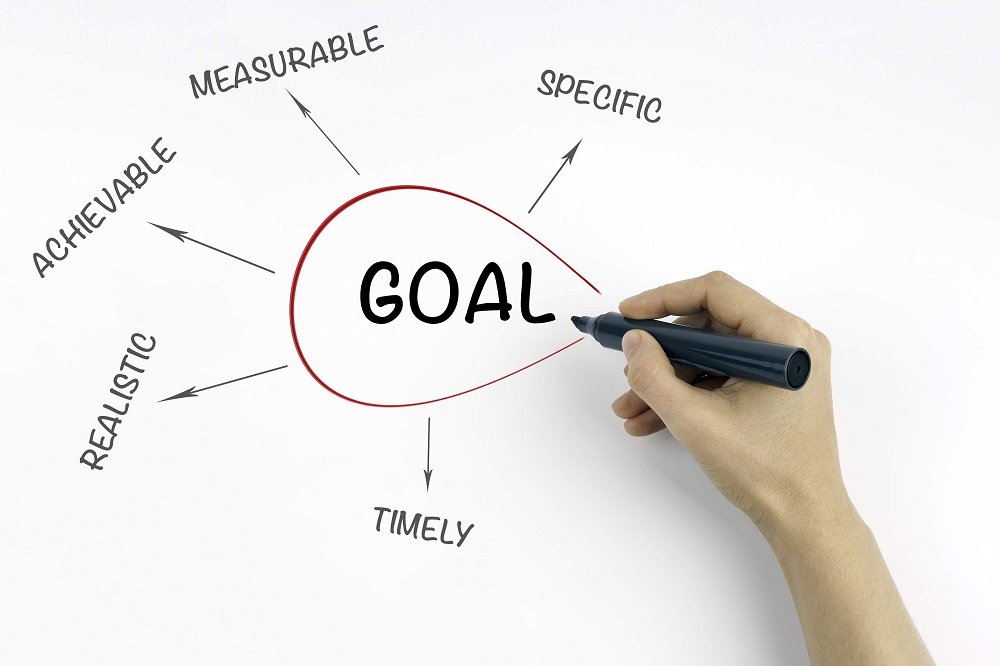- Home
- Benefits of Time Management
- How to Balance Work and Personal Life
- Smart Goal Examples
SMART Goal Examples to Be More Productive
SMART goal examples to use as ideas to increase your own productivity.
Luckily there is a scientific formula for setting and achieving your goals. Whether you set long or short term goals, SMART goals is the way to go. Before you jump into the SMART goal examples for the productivity hack, lets quickly review what SMART stands for:

S - Specific. When creating a goal you want it to be short and to the point. Consider using action verbs to state your goal.
M - Measurable. Measurable goals allow you to track how you are going and review, reward, and re-calibrate.
A - Achievable. Having clear action steps and milestones shows you the path to achieving your goals
R - Realistic. Challenging goals are better than easy goals. Consider setting goals that stretch you but are defined well enough that if you focus on them you will achieve them.
T - Timely. Your goals should be time-bound so that they create a practical sense of urgency and give you a clear idea of what to achieve by when.
SMART Goal Example #1: "I want to exercise more"
You might be asking what is this type of goal doing in a blog about increasing productivity. Well.....Richard Branson says that his daily habit of exercise doubles his productivity.
And science confirms this as exercise helps you out professionally by
- improving memory,
- reducing stress, and
- increasing creativity.
So given exercise is important for your health, well-being and....ahem..productivity - is this a SMART goal?
No!
When you look at this goal to 'exercise more' it is not specific or measurable and there are no clear achievable action steps within a specific timeline.
To make 'I want to exercise more' a SMART goal, ask yourself 'What is your baseline level of exercise?'
Lets say your baseline is that you go for two 5km runs a week and you do this in 35 minutes...with a few walking stops.
A SMART goal may be that in a six week goal setting program that you will run 5km in 30 minutes with no stopping. You will do this by running 4 times a week. This is a SMART goal that has a baseline, a target that is measurable, and clear set of achievable actions to achieve the goal.
SMART Goal Example #2: "Stop checking email so often"
Doing email is an easy way to put off doing stuff that matters. In fact, many of our clients tell us that much email is in quadrant 3 of the time management matrix.
The goal to "stop checking email so often" is a general goal with no clear set of actions about how you are going to achieve your goal.
A better goal is:
I want to check emails three times a day
OK, there are two benefits to this type of goal:
- The goal has been flipped from an avoidance goal to an approach goal - so you are much more likely to achieve the goal
- It is specific and measurable.
However, it is not clear what achievable action steps are going to taken to achieve this goal.
A even better goal is:
I will check email three times a day, schedule this time in my calendar, and turn off the alerts
This is an example of a SMART goal. It is specific, measurable, achievable, realistic, and timely.
SMART Goal Example #3: "Provide good service to customers"
While this is gets a tick for being an approach goal (rather than an avoidance goal) it is not a SMART goal. It is not specific and it is not measurable. Remember one of the key points from goal setting theory is that "do better goals" are not as good as specific goals.
Looking more closely at this goal there is also no method of measuring this goal. While it may be clear in your head it is not down on paper.
A better goal is:
Increase customer base by 10%
This is a better goal. It is specific and it is measurable. However, the problem with this type of goal is that you don't have much control over it. One of the things with goal setting (to reward the effort that you put in for digging in) is that the goals need to be somewhat in your control.
The second point is that it is not specifically related to good customer service but rather a byproduct of good customer service.
A even better goal is:
Increase service satisfaction from 85% to 95%
This is a SMART goal. It is specific and measurable. Importantly it is also aligned to the original goal of providing good service to customers.
New! Comments
Have your say about what you just read! Leave me a comment in the box below.